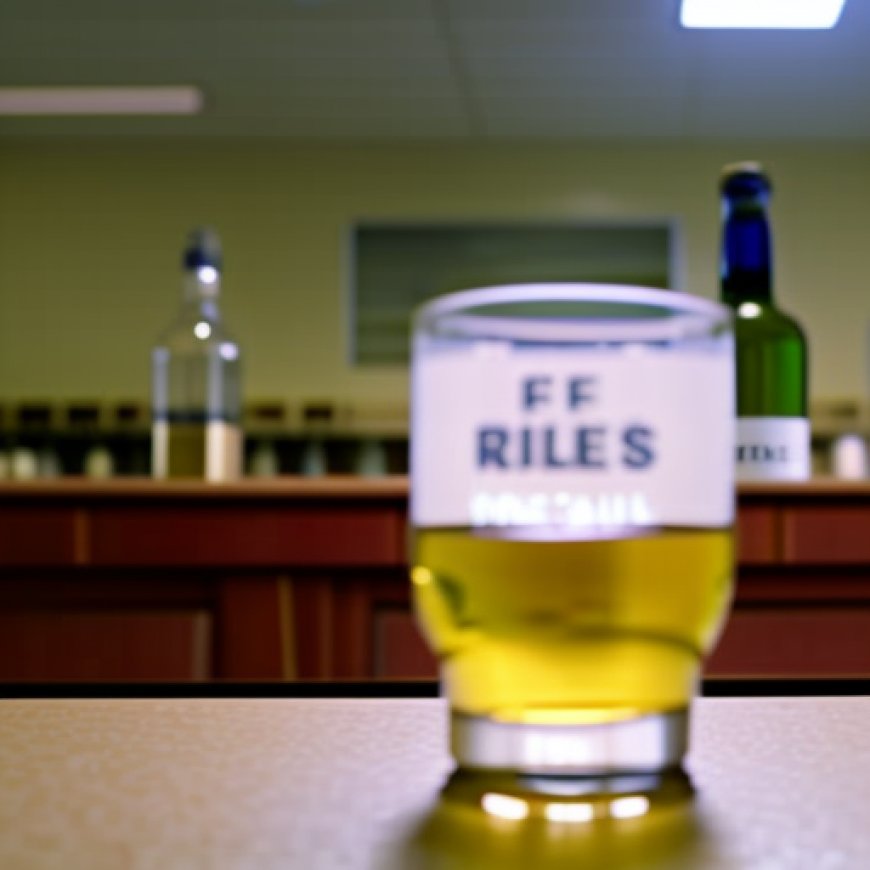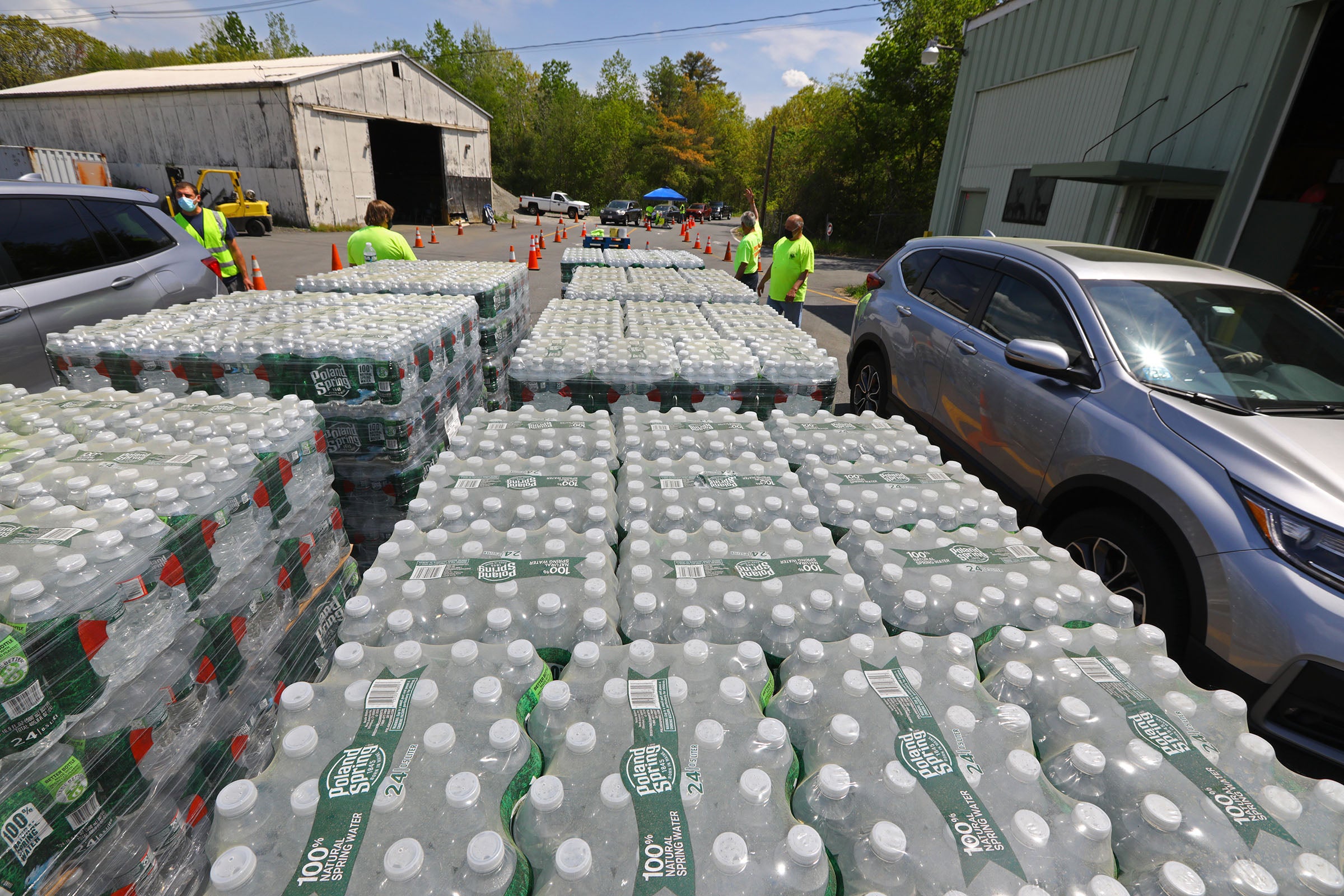The impact of the EPA’s first ever federal PFAS rule limiting toxic ‘forever chemicals’ in drinking water – Harvard Law School
The impact of the EPA's first ever federal PFAS rule limiting toxic 'forever chemicals' in drinking water - Harvard Law ... Harvard Law School


In early 2021, local officials in the Boston suburb of Wayland, MA were confronted with a new weekly responsibility: distributing bottled water to roughly 1,400 homes per week.
Samples from the town’s Happy Hollow Well had revealed levels of perfluorooctane sulfonic acid, or PFOA, exceeding state limits imposed the previous year by the Massachusetts Department of Environmental Protection. The chemical found in Wayland’s water supply is one of six different variations of per-and-polyfluoroalkyls, or PFAS, that Massachusetts caps at 20 parts per trillion.
But Wayland was not alone. Of the 351 municipalities in Massachusetts, 240 have detected PFAS in at least one public water system since the fall of 2020. And 119 of those have reported test results that violate the 20 parts per trillion limit.
On April 10, 2024, the United States Environmental Protection Agency, or EPA, released its much-anticipated federal rule governing drinking water standards for certain PFAS variations, including PFOA.
The new federal limit? Four parts per trillion.
As Reuters reported in April, not everyone supports the new regulation. According to the news service, “The National Association of Manufacturers, the American Chemistry Council and the U.S. Chamber of Commerce said in comments last year to a draft version of the rule that it overstated the benefits of imposing the limits while underestimating costs.” Other industry groups, such as the National Association of State Departments of Agriculture, have contended such stringent limits would disproportionately burden rural regions.
Harvard Law alumnus James Pollack ’20 is a senior associate at the boutique environmental law firm Marten Law LLP. He and the firm represent drinking water systems polluted by emerging contaminants like PFAS, and he also maintains a regulatory practice supporting consumer product manufacturers. Pollack recently spoke with Harvard Law Today to discuss PFAS pollution, its effect on the legal industry, and its widespread impact across the U.S. and beyond. He says cities and towns are likely in for a wild ride.
James Pollack ’20 is a senior associate at the environmental law firm Marten Law.

Harvard Law Today: What are PFAS? What effect do they have on humans and the environment?
James Pollack: PFAS are a family of chemicals. There are somewhere between 3,000 to 13,000 different variations, so broad statements about the entire family can be difficult to make. But what really defines this ‘family’ is its underlying carbon-fluorine bond and characteristics shared across the family as a result of that uniquely strong bond.
PFAS are stain resistant, water resistant, heat resistant, and friction reducing — very few chemicals have these properties simultaneously, so PFAS have been used in an extremely wide variety of consumer products and industrial processes across the world.
Scientific research on ‘legacy PFAS’ — the oldest, most regulated types like PFOA and PFOS — has shown just how nasty these chemicals can be. Decades of medical studies have produced evidence that PFOA and PFOS are very disruptive to human biology, affecting a wide range of organs including the kidneys, liver, and thyroid. They have been associated with diabetes, reproductive harms, and many other conditions. It’s hard to think of a way that they don’t hurt you.
Recent studies on the health effects of PFAS helped inform a new rule that the EPA officially adopted about two weeks ago, which sets a maximum contaminant level of four parts per trillion. For context, that’s a concentration roughly the same as four drops of water in 20 Olympic-sized swimming pools. We’re talking really small quantities.
The goal of the new federal rule is essentially to hit nondetectable levels in drinking water. Just to give you an idea of what types of comparisons we should be making, that is the same level required for lead.
HLT: How prevalent are PFAS? How many people are impacted by the new rule?
Pollack: PFAS are highly mobile and uniquely persistent — that’s why they get the term ‘forever chemical.’ The EPA estimates that, under the new rule, the water for 105 million Americans currently violates the MCL for one or more of the regulated PFAS. We’re talking about a third of the country needing substantive changes to their water supplies. Keep in mind, Massachusetts is one of just 11 states that has a PFAS drinking water standard currently in place, and state standards are not as stringent as the new federal MCL.
Nationally, the impact will include costly water treatment infrastructure upgrades to implement granular activated carbon filtration or other treatment. In some service areas, it may involve providing bottled water like we’ve seen in some communities throughout the country. We have a client community outside of a military base that needed bottled water in the same fashion as they did in Flint, Michigan. It may mean changing water sources, like Cambridge did in 2022.


HLT: Where do PFAS come from? Who has been found responsible for PFAS contamination when a drinking water supply, for instance, has been polluted?
Poll
SDGs, Targets, and Indicators
1. Which SDGs are addressed or connected to the issues highlighted in the article?
- SDG 6: Clean Water and Sanitation
- SDG 12: Responsible Consumption and Production
- SDG 13: Climate Action
- SDG 15: Life on Land
2. What specific targets under those SDGs can be identified based on the article’s content?
- SDG 6.3: By 2030, improve water quality by reducing pollution, eliminating dumping and minimizing release of hazardous chemicals and materials, halving the proportion of untreated wastewater and substantially increasing recycling and safe reuse globally.
- SDG 12.4: By 2020, achieve the environmentally sound management of chemicals and all wastes throughout their life cycle, in accordance with agreed international frameworks, and significantly reduce their release to air, water and soil in order to minimize their adverse impacts on human health and the environment.
- SDG 13.1: Strengthen resilience and adaptive capacity to climate-related hazards and natural disasters in all countries.
- SDG 15.3: By 2030, combat desertification, restore degraded land and soil, including land affected by desertification, drought and floods, and strive to achieve a land degradation-neutral world.
3. Are there any indicators mentioned or implied in the article that can be used to measure progress towards the identified targets?
Yes, the following indicators can be used to measure progress towards the identified targets:
- Indicator 6.3.2: Proportion of bodies of water with good ambient water quality
- Indicator 12.4.2: Hazardous waste generated per capita and proportion of hazardous waste treated, by type of treatment
- Indicator 13.1.1: Number of deaths, missing persons and directly affected persons attributed to disasters per 100,000 population
- Indicator 15.3.1: Proportion of land that is degraded over total land area
Table: SDGs, Targets, and Indicators
| SDGs | Targets | Indicators |
|---|---|---|
| SDG 6: Clean Water and Sanitation | 6.3: By 2030, improve water quality by reducing pollution, eliminating dumping and minimizing release of hazardous chemicals and materials, halving the proportion of untreated wastewater and substantially increasing recycling and safe reuse globally. | 6.3.2: Proportion of bodies of water with good ambient water quality |
| SDG 12: Responsible Consumption and Production | 12.4: By 2020, achieve the environmentally sound management of chemicals and all wastes throughout their life cycle, in accordance with agreed international frameworks, and significantly reduce their release to air, water and soil in order to minimize their adverse impacts on human health and the environment. | 12.4.2: Hazardous waste generated per capita and proportion of hazardous waste treated, by type of treatment |
| SDG 13: Climate Action | 13.1: Strengthen resilience and adaptive capacity to climate-related hazards and natural disasters in all countries. | 13.1.1: Number of deaths, missing persons and directly affected persons attributed to disasters per 100,000 population |
| SDG 15: Life on Land | 15.3: By 2030, combat desertification, restore degraded land and soil, including land affected by desertification, drought and floods, and strive to achieve a land degradation-neutral world. | 15.3.1: Proportion of land that is degraded over total land area |
Copyright: Dive into this article, curated with care by SDG Investors Inc. Our advanced AI technology searches through vast amounts of data to spotlight how we are all moving forward with the Sustainable Development Goals. While we own the rights to this content, we invite you to share it to help spread knowledge and spark action on the SDGs.
Fuente: hls.harvard.edu

Join us, as fellow seekers of change, on a transformative journey at https://sdgtalks.ai/welcome, where you can become a member and actively contribute to shaping a brighter future.







